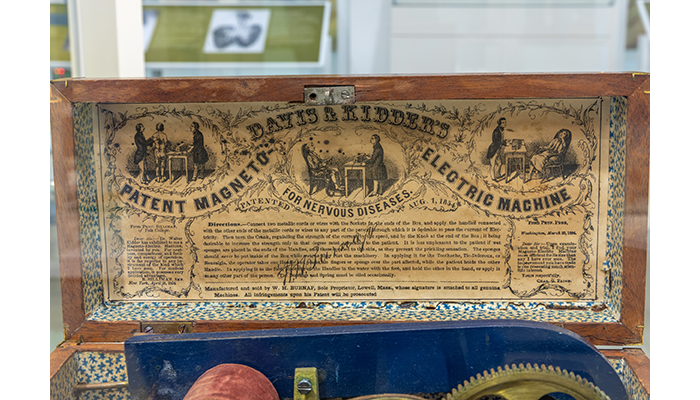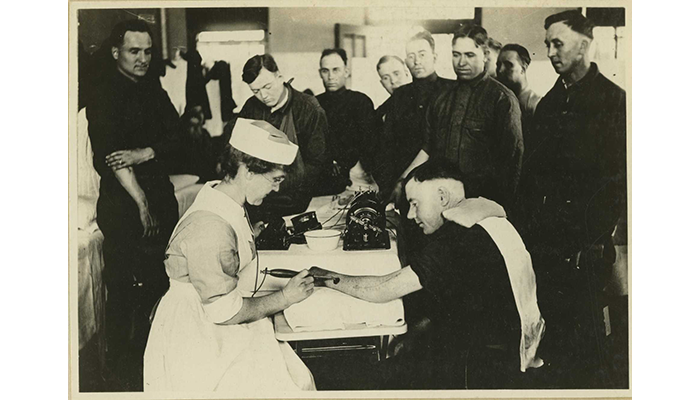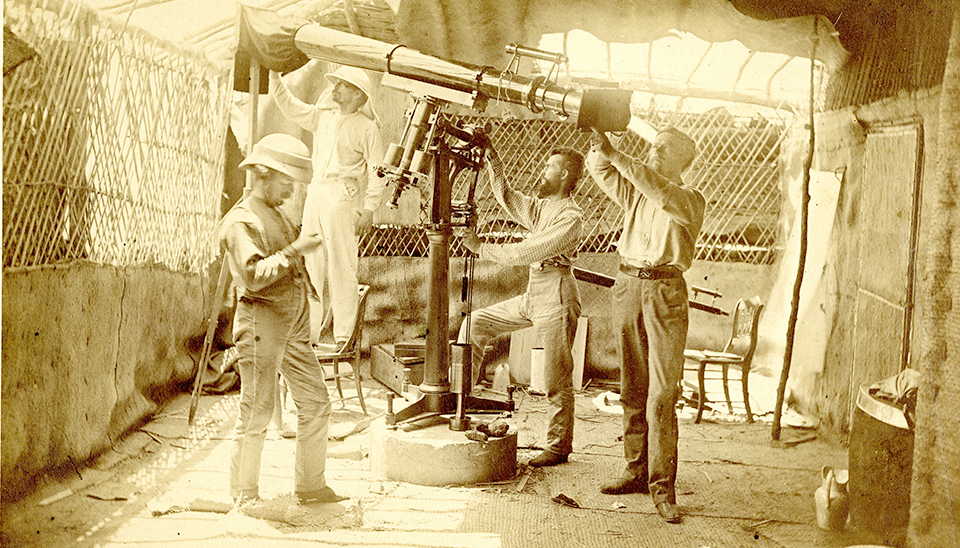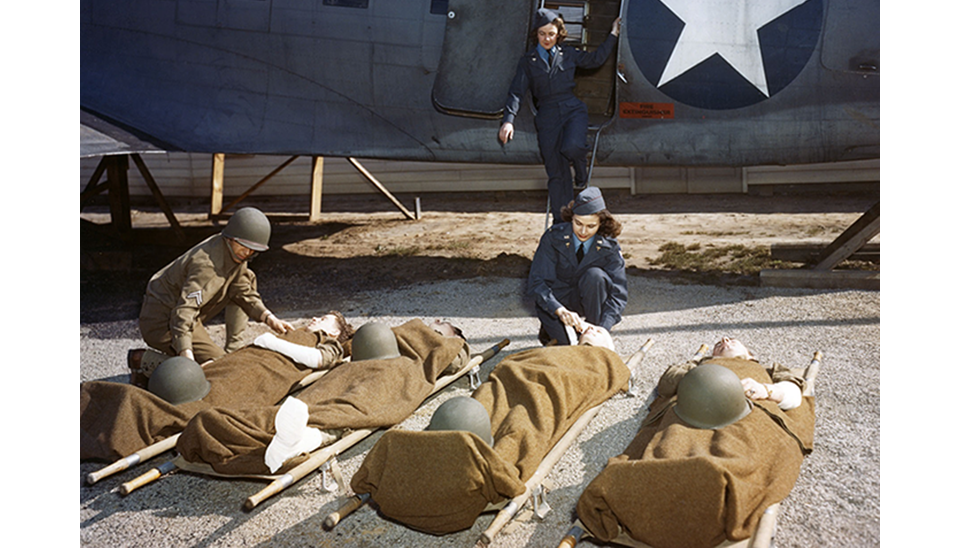Since ancient Egypt when healers used shocks from electric catfish to treat arthritis pain, humans have sought to cure ailments with electrical currents (electrotherapy). More recently, medical researchers found cures using the electricity generated within the human body itself (bioelectricity). At the National Museum of Health and Medicine, visitors can view two objects representative of therapeutic electricity and bioelectricity: Davis & Kidder's Patent Magneto-Electric Machine for Nervous Diseases patented in 1854 and the 7 Day Wound Bandage, circa 2010.

Davis & Kidder's Patent Magneto-Electric Machine for Nervous Diseases was patented by Ari Davis in 1854. [M-717.00020] (NMHM photo)
While the medical world long disproved Davis & Kidder's 19th century cure-all device as quack medicine, its use of electrodes and low voltage alternating current preceded other forms of electrotherapy, such as transcutaneous electrical nerve stimulation devices that are still used in military medicine for pain relief. Since the birth of the physical therapy profession during World War I, physical therapists have used and managed electrotherapeutic methods in moderation, including epidural electrical stimulation, functional electrical stimulation, and peripheral nerve stimulation to treat neuroinflammation in patients with spinal cord injuries.

A reconstruction aide uses an electrical device to stimulate nerves as part of physical therapy, World War I. (Reeve 41488)
During the 21st century, electrotherapy in military medicine focused on bioelectricity, the naturally occurring electricity within the human body. Following a break in the skin, the body generates electric current at the site of injury called wound or leakage currents. The electric currents generated by cells in the wound aid in the formation of new blood vessels. Typically, over the span of a few days, ions and cells at the wound site attract and repel like a fluctuating battery to heal skin tissue. Accordingly, technology developed to increase bioelectricity's wound-healing potential.

High frequency vacuum tube used for peripheral nerve stimulation as part of physical therapy, World War I. (Reeve 41482)
Small wounds operate on smaller electric fields and heal from the outside in. Large wounds, like those received in battle, take longer to heal. Military medicine of the 2020s sees the Defense Advanced Research Projects Agency, the Air Force Office of Scientific Research, and the United States Army Medical Research and Materiel Command building and testing innovative medical devices to boost the body's natural wound currents and accelerate the healing of large and chronic wounds in warfighters.
Bioelectric bandages, or smart bandages, are one such innovation. Dan Kennedy of USAMRMC reports the results of testing a bioelectric bandage that is made with a dressing infused with rows of silver and zinc dots on soldiers. The metals in the dots create electrical impulses when exposed to a wound's moisture. According to Kennedy, the silver- and zinc-infused bandages relieve pain and have an antimicrobial effect. Compared to antibiotics, researchers assert that smart bandages are an improvement in wound care, as they do not kill healthy bacteria.

This bioelectric wound dressing (7 Day Wound Bandage) harnesses naturally occurring electric current within the human body to facilitate healing, ca. 2010. [2010.0023.1] (NMHM photo)
In the National Museum of Health and Medicine's "150 Years of the Army Medical Museum" exhibit, visitors can view the 7 Day Wound Bandage. The research and use of electrotherapy in military medicine has come a long way since the days of wooden, hand-cranked magneto-electric boxes. The development and use of treatments to enhance the body's internal bioelectricity to heal wounds continues to galvanize the field.




